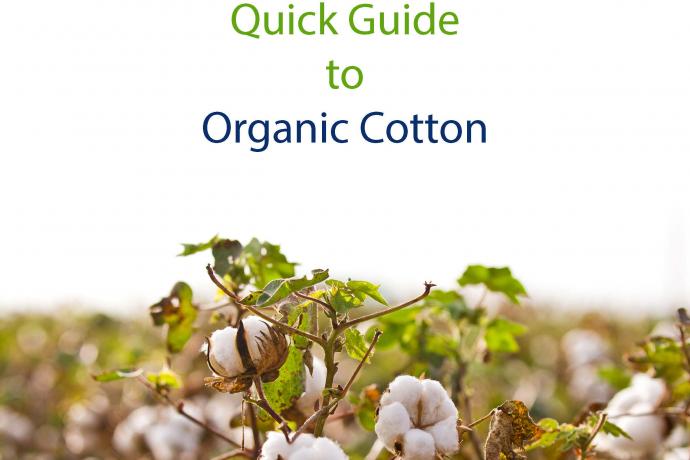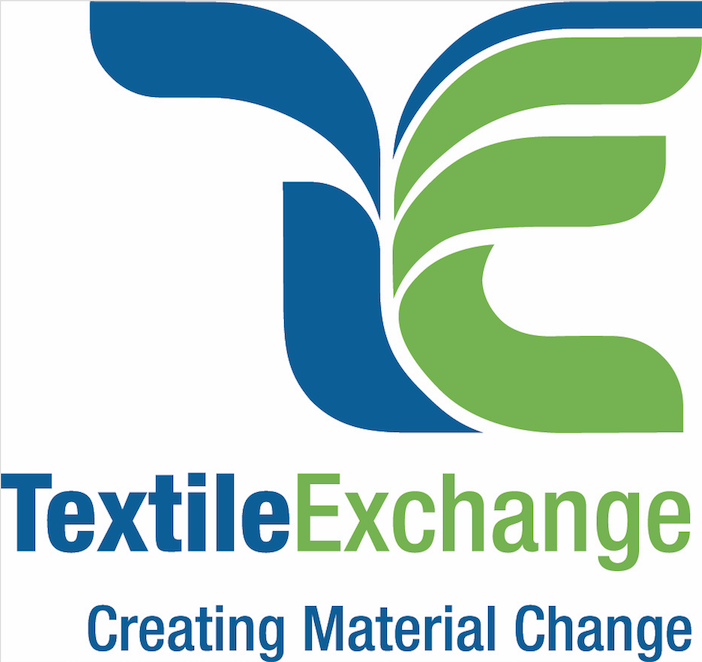What You Wear Matters! Quick Guide to Organic Cotton
A Fact Sheet on Organic Cotton - Lower Impacts for Agriculture and Apparel Industries.
Published 06-23-17
Submitted by Textile Exchange
 Quick Guide to Organic Cotton, June 2017
Quick Guide to Organic Cotton, June 2017Textile Exchange, publisher of the Organic Cotton Market Report, releases Quick Guide to Organic Cotton, an overview of the positive impacts of organic cotton, including frequently asked questions and supporting facts that indicate organic cotton is the preferred fiber choice compared to its chemically produced counterpart.
“The Quick Guide to Organic Cotton, highlights the benefit of organic production as a pathway to restorative, resilient and regenerative landscapes and communities,” notes La Rhea Pepper, the Managing Director of Textile Exchange. “Cotton production has evolved over the last 15 years,” Pepper said, and “greater awareness of the health, economic and environmental benefits of organic farming practices by farmers and buyers has influenced corresponding improvements in many cotton production systems, including the input intensive practices of chemically grown cotton.” According to its Preferred Fiber and Materials Market Report, Textile Exchange reports that adoption of preferred cotton production methods has grown to 8.6% of the cotton market but organic cotton, in general, continues to have the lowest environmental impacts.
Textile Exchange’s Quick Guide to Organic Cotton includes the latest research from expert sources to create a comprehensive resource for the industry and media. The current research work reveals three top reasons to support the expansion of organic cotton agriculture:
1. The Health and Environmental Impacts of Pesticides Must Be Acknowledged in a Comparison of Organic and Chemically Grown Cotton Production.
According to the USDA’s National Organic Program, organic farming is defined as:
“the application of a set of cultural, biological, and mechanical practices that support the cycling of on-farm resources, promote ecological balance, and conserve biodiversity. These include maintaining or enhancing soil and water quality; conserving wetlands, woodlands, and wildlife; and avoiding use of synthetic fertilizers, sewage sludge, irradiation, and genetic engineering.”
Organic cotton is grown without the use of toxic and persistent pesticides or fertilizers while chemical cotton is dependent on both. According to the Pesticide Action Network UK, “cotton crops cover 2.4% of the world’s cultivated land but use 6% of the world’s pesticides, more than any other single major crop.”
There is an overwhelming body of research showing higher incidents of serious diseases and development problems from exposure to agricultural chemicals or physical proximity to chemical-based farming communities. The Agricultural Health Study, funded by the National Cancer Institute and the National Institute of Environmental Health Sciences, is one of the largest ongoing health studies with over 89,000 participants from farming communities and reveals higher incidents of cancer (including prostate cancer), Parkinson’s disease, diabetes, thyroid disease and asthma.
2. What About Yields?
A favorite argument in support of chemical agriculture is that the yields are higher.
Chemically intensive agriculture, especially in irrigated systems, push the ecosystem year-on-year for higher yields. This requires the use of an ever-increasing amount of chemical inputs, including growth regulators.
3. A Reality Check About Water and Cotton.
It is well established that cotton agriculture and apparel manufacturing, in general, require significant amounts of water. Whether the cotton is grown with chemicals, or organically, each farm and geographic region of the world will have different water usage and impacts. However, the notion that chemical cotton uses less water than organic cotton is false. Textile Exchange initiated a peer-reviewed Life Cycle Analysis (LCA) on organically grown cotton that uses the same methodology and the same LCA consultancy as was used for chemically grown cotton to ensure the most reliable information to base comparisons. Based on the LCA findings, organic production of cotton for an average sized t-shirt resulted in a savings of 1,982 gallons of water compared to the results of chemically grown cotton.
The real issue about water is pollution. Toxic chemicals used in conventional cotton production are poisoning the very water it claims to save.
What Can Consumers Do to Influence Improvements in Cotton Agriculture and Apparel Manufacturing?
“Textile Exchange believes that consumers who care about the environment and the farming communities which produce the cotton for their clothing, should support brands and retailers using organic and preferred cotton,” advocates Ms. Liesl Truscott, Materials Strategy Director for Textile Exchange. The latest Organic Cotton Market Report produced by Textile Exchange reveals the Top 10 users of organic cotton by volume:
C&A
H&M
Tchibo
Inditex
Nike, Inc.
Decathlon
Carrefour
Lindex
Williams-Sonoma, Inc.
Stanley and Stella
Textile Exchange, whose 200+ members represent leading brands and retailers in the global apparel and textile industry, has been working alongside organic cotton stakeholders for 15 years. Other companies with organic cotton programs are also revealed in the full report.
Brands and Retailers Interested in Organic Cotton Should Benchmark Their Usage Against the Industry.
The Preferred Fiber and Materials Benchmark (PFM Benchmark) provides a robust structure to help companies systematically measure, manage and integrate a preferred fiber and materials strategy into mainstream business operations, to compare progress with the sector, and to transparently communicate performance and progress to stakeholders. A preferred fiber is defined by Textile Exchange as a fiber, material or product that is ecologically and socially progressive; one that has been selected because it has more sustainable properties in comparison to other options. Organic cotton is a preferred fiber based on its lower impacts as reported in Textile Exchange’s Material Snapshot on Organic Cotton.
Companies follow a self-assessment process intended to help identify the strengths and the gaps where future progress can be made. By comparing section scores with those achieved by the whole sector, companies can plan improvement efforts and prioritize action areas. Key indicators (inputs, outcomes, and impacts) of the PFM Benchmark are monitored through a Barometer of Progress and align with Sustainable Development Goal #12: Ensuring sustainable consumption and production and supporting sustainable agriculture under Sustainable Development Goal #2. See Textile Exchange’s commitment to the Sustainable Development Goals here.
Additionally, Textile Exchange hosts various preferred fiber working groups (including the Organic Cotton Round Table (OCRT)) with an upcoming meeting being held at its annual Textile Sustainability Conference during the week of October 9th outside of Washington, D.C. The Agenda for the preferred fiber working groups and OCRT is available here.
About Textile Exchange: Textile Exchange, founded in 2002, is a global nonprofit organization that works closely with all sectors of the textile supply chain to find the best ways to create positive impacts on water, soil, air, animals, and the human population created by the textile industry. Textile Exchange accomplishes this by providing the knowledge and tools the industry needs to make significant improvements in three core areas: Fiber and Materials, Integrity and Standards, and Supply Chain. A truly global organization, Textile Exchange is headquartered in the U.S. with Staff and Ambassadors located around the world. To learn more about Textile Exchange, visit: www.TextileExchange.org and follow us on Twitter at @TextileExchange.

Textile Exchange
Textile Exchange
Textile Exchange is a global non-profit that works closely with our members to drive industry transformation in preferred fibers, integrity and standards and responsible supply networks.
More from Textile Exchange

